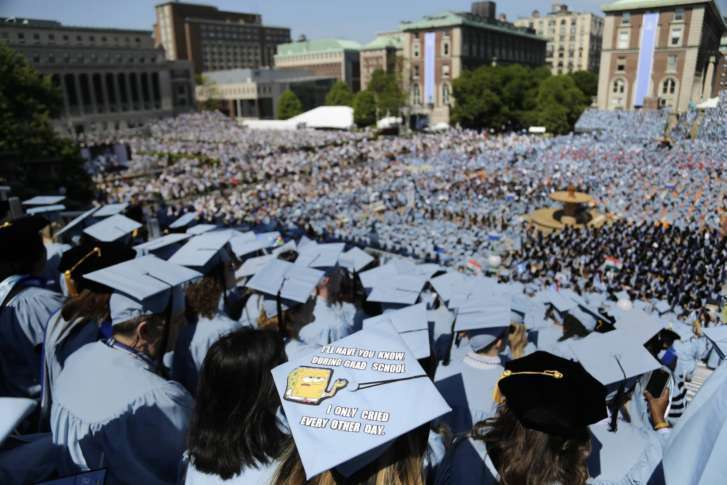 Graduates are unable to repay education loans because they cannot find jobs in a period of jobless growth
Graduates are unable to repay education loans because they cannot find jobs in a period of jobless growthThere is A government policy for everything. It is often gobbledygook, for example the Import-Export Policy until 1991-92. Therefore, it was no surprise that the government and the public sector banks claimed that they had a policy on granting education loans. That was true, except that, in actual practice, the loans given by the banks were few; banks invariably insisted on collateral; and the borrowing students generally belonged to well-to-do families that could provide collateral security. The poor were shut out, absolutely and physically.
How Poor Were Shut Out
In 2005, I began to take a closer look at the so-called policy on education loans. I found that loans were simply not given to the poor. Among the poor, the few who got admission in a college relied on the few scholarships that were available or sold the few assets they had — usually a patch of land or bits of jewellery. Bank managements had stripped the branch managers of the power to grant education loans and insisted that the applications be sent to the regional office or the head office for appraisal and decision. Bank managers routinely turned away an applicant on the ground that her place of residence or the place of the college did not fall within the service area of the branch. If a persevering applicant was able to cross all the hurdles, the ultimate weapon of denial was to demand collateral. In case the student was able to provide the collateral, citing some obscure rule, only a part of the amount applied for was sanctioned. We changed that situation by deliberate and forceful intervention. As a result, the number of education loans went up, the average size of the loan went up and the total amount disbursed went up year after year. Banks were required to empower their branches to grant education loans. Banks were forbidden to ask for collateral except in the case of a loan in excess of Rs 7,50,000. The concept of service area was abolished. Slow but steady progress was made. Between 2007-08 and 2013-14 the average growth rate was 20%.

Social, Economic Profile Changed
More than the number or the average size of the loans disbursed, the dramatic change was in the social and economic profile of the students. Thousands of first-generation learners got loans. Banks organised events at which education loans were given to wards of small farmers, agricultural labourers, Class IV government servants, daily wage earners, street vendors (of idlis, for instance) and so on. Many of the borrowers belonged to the Scheduled Castes or Other Backward Classes, many were girls. The case that is imprinted in my memory is of an itinerant, drum-rolling soothsayer (kudu kuduppai karan) who proudly declared that his son had got an education loan to study engineering! When the UPA demitted office, as on March 31, 2014, the number of education loans that were outstanding was 7,66,314 and the amount outstanding was Rs 58,551 crore. To this must be added the number of education loans that had been disbursed during the 10-year period and returned by the borrowers. The programme had fired the dreams of hundreds of thousands of families. Alas, that chapter seems to have drawn to a close under the NDA government. Look at the Table. Wherever I go, I hear that education loans have dried up. The average growth rate in the last years is just 5.3%. When a programme winds down, the worst affected will be the poor who do not have any influence or connections. The message seems to have gone out that education loans are not a priority. The ostensible reason is that the NPA level of education loans is high. The powers that be are deaf to the argument that graduates are unable to repay the loans because they cannot find jobs in a period of jobless growth. Once the banks got the message, they have gone after borrowers like savage moneylenders — sending ‘recovery agents’ (read musclemen), invoking sureties, encashing the collateral, filing suits, etc.
Resolution Only For Rich
It is the ostensible reason that makes me angry. Assume that all the NPA accounts will be loss accounts, the total loss at the end of December 31, 2016, will be Rs 6,336 crore. Compare that number with the amount at stake in the 12 corporate group accounts referred under the Insolvency and Bankruptcy Code: over Rs 250,000 crore, of which over 60% is NPA! When the 12 cases go through the IBC process, whatever may be the mode of resolution, the banks are expected to take a hit of at least 30-50% of the total amount. Twelve promoter groups will cause the banks a humongous loss of Rs 75,000 to Rs 1,25,000 crore. That will be called ‘financial resolution’, the promoters will lose their equity in the company, but lending will resume to the groups. At its worst, the thousands of families that took education loans will cause the banks a loss of Rs 6,336 crore (or let’s stretch it to Rs 10,000 crore). There is no resolution plan for such loans; it will be called ‘financial catastrophe’ and all education loans will be stopped. Do you see the true face of the development-cum-welfare State?
[“Source-financialexpress”]




